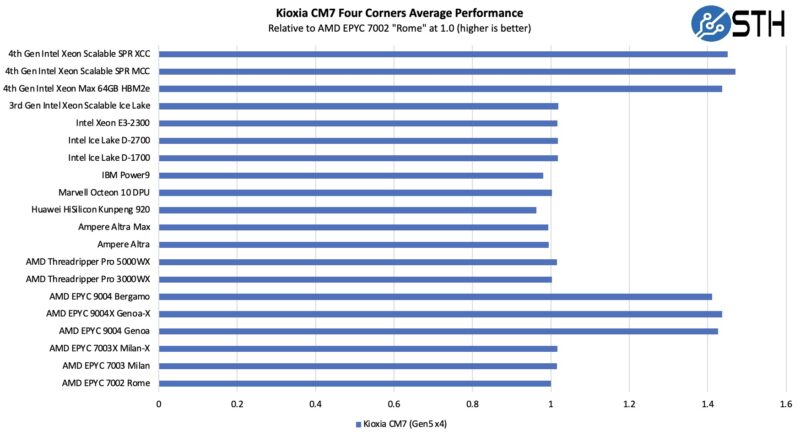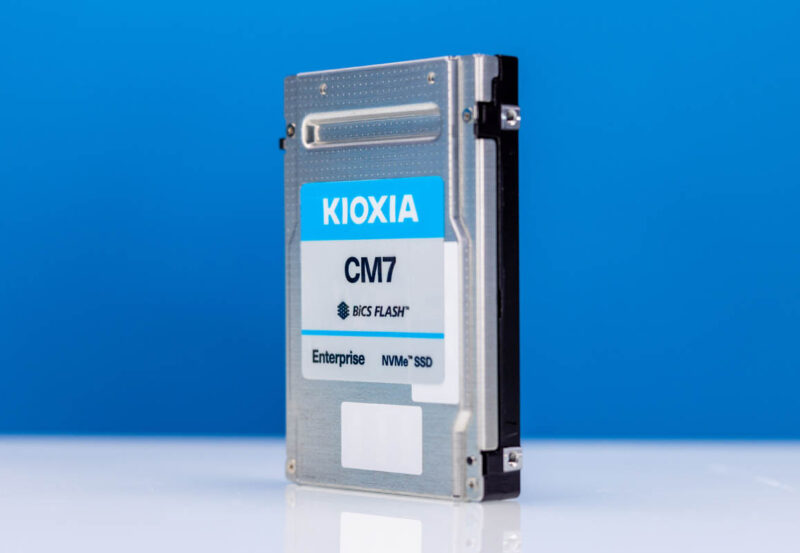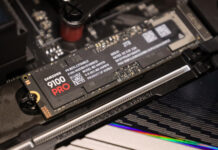Performance by CPU Architecture
If you saw our recent More Cores More Better AMD Arm and Intel Server CPUs in 2022-2023 piece, or our pieces like the Supermicro ARS-210ME-FNR Ampere Altra Max Arm Server Review, Huawei HiSilicon Kunpeng 920 Arm Server piece, you may have seen that we have been expanding our testbeds to include more architectures. This is in addition to the Ampere Altra 80 core CPUs that are from the family used by Oracle Cloud, Microsoft Azure, and Google Cloud. We also managed to test these on the newest generation AMD EPYC Bergamo and Genoa-X SKUs.

Overall, the same patterns we have seen with other drives hold on this one. Performance is very good save for some PCIe Gen4 Arm systems we have tested (and Power9.) We used to have a “zoomed” chart but putting the Gen5 drive on a Gen5 platform versus a Gen4 platform distorted that chart too much.
We also managed to test this with the Intel Xeon Max CPUs, in the event one is using Intel’s top-end AI and HPC CPUs with onboard HBM2e memory. There the cost of a SSD is relatively small compared to the CPUs and systems, and storage is generally network storage, but we still wanted to see the local scratch disk performance.
As a quick note, we tested this on the AMD EPYC 8004 series, and two upcoming Intel Xeon CPUs for later this month and the results were still about the same. When we add those, we will have up to 23 different server architectures in our SSD reviews.
Final Words
The performance of the Kioxia CM7 is really strong. At the same time, it really feels like this is a first-generation PCIe Gen5 NVMe SSD because of the maximum write speed. On the other hand, it is a first Gen PCIe Gen5 drive so perhaps that makes sense.

The performance of the drive is not necessarily enough to make it a clear winner on PCIe Gen4 platforms, and that is fair. Still, there is one thing for sure. If you want the fastest read speed PCIe Gen5 NVMe SSD out there from a major SSD vendor, the Kioxia CM7 needs to be on the top of your list. It may be hard to see in server vendor configurators, but it makes one wonder why they would still use a mixed-use or read-optimized PCIe Gen4 drive in a PCIe Gen5 server.




The article states “We have all of these working on x86 but we do not have all working on Arm and POWER9 yet.” Since Power9 is PCIe4 and this is a PCIe5 drive, maybe Power10 would be a better choice.
How does it match up with the Crucial T700? I see that is conspicuously absent from the comparisons.
bifurcation on 16x slot. 4×4 gen4 Raid10 . quad nvme gen4 1tb get you 2tb storage… match these speeds. been here for a while…
T700 absent because consumer drives are not in the comparison – only DC/Ent drives.
And also, consumer drives are peaky in speeds, they don’t keep their performance for long because most of the performance comes from the dynamic SLC cache.
DC and enterprise drives do not do SLC caching and are far more consistent.
Partly because they have a lot of channels than consumer SSDs do.